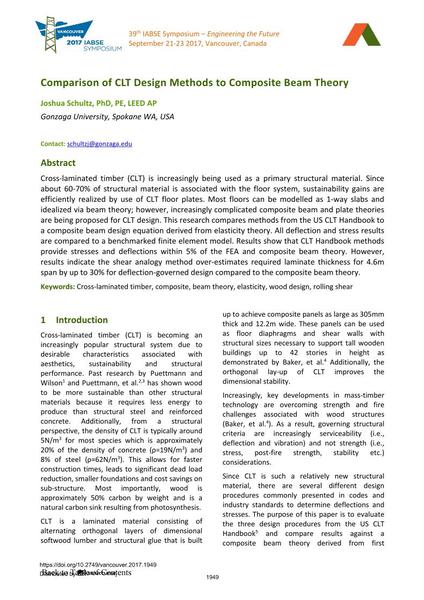Comparison of CLT Design Methods to Composite Beam Theory

|
|
|||||||||||
Bibliografische Angaben
| Autor(en): |
Joshua Schultz
(Gonzaga University, Spokane WA, USA)
|
||||
|---|---|---|---|---|---|
| Medium: | Tagungsbeitrag | ||||
| Sprache(n): | Englisch | ||||
| Tagung: | IABSE Symposium: Engineering the Future, Vancouver, Canada, 21-23 September 2017 | ||||
| Veröffentlicht in: | IABSE Symposium Vancouver 2017 | ||||
|
|||||
| Seite(n): | 1949-1956 | ||||
| Anzahl der Seiten (im PDF): | 8 | ||||
| Jahr: | 2017 | ||||
| DOI: | 10.2749/vancouver.2017.1949 | ||||
| Abstrakt: |
Cross-laminated timber (CLT) is increasingly being used as a primary structural material. Since about 60-70% of structural material is associated with the floor system, sustainability gains are efficiently realized by use of CLT floor plates. Most floors can be modelled as 1-way slabs and idealized via beam theory; however, increasingly complicated composite beam and plate theories are being proposed for CLT design. This research compares methods from the US CLT Handbook to a composite beam design equation derived from elasticity theory. All deflection and stress results are compared to a benchmarked finite element model. Results show that CLT Handbook methods provide stresses and deflections within 5% of the FEA and composite beam theory. However, results indicate the shear analogy method over-estimates required laminate thickness for 4.6m span by up to 30% for deflection-governed design compared to the composite beam theory. |
||||
| Stichwörter: |
Verbund Biegetheorie Brettsperrholz Rollschub
|
||||
